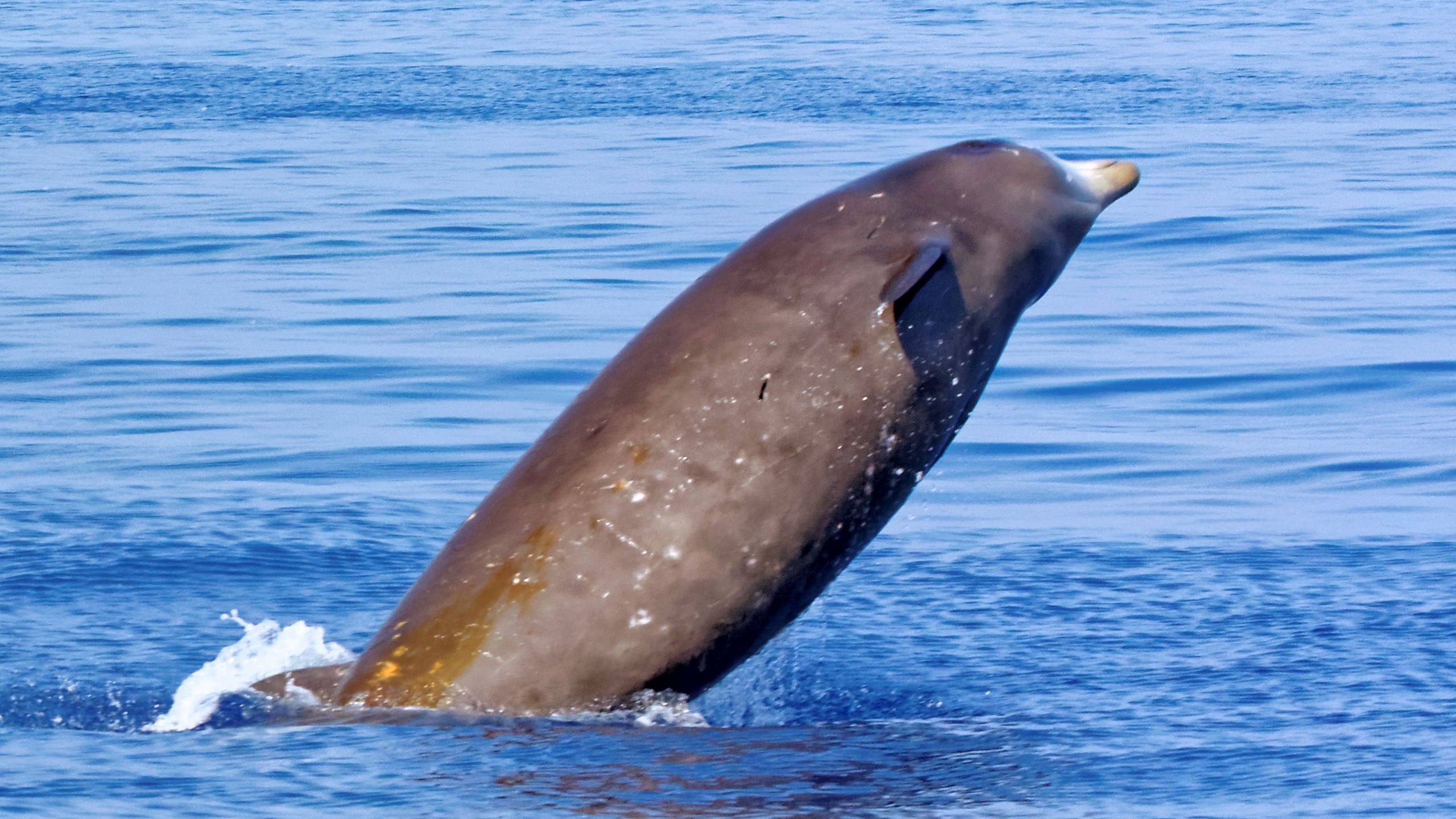What is the deepest-diving mammal?
One marine mammal has been documented diving as deep as 9,816 feet — equivalent to the depth of over 30 Statues of Liberty stacked on top of one another.

Marine mammals like whales and seals need highly specialized bodies to dive far below the waves and withstand the crushing pressure of the deep ocean, while going without oxygen for an extended period of time.
That’s because mammals, unlike fish, can only get oxygen by breathing the air at the surface of the ocean.
"For anything that breathes air and then forages at depth, you've got this real disparity that most animals don't have to deal with," Nicola Quick, a marine scientist at Duke University in North Carolina, told Live Science. "One of their critical resources, air, is in one place — and their other critical resource, which is food, is in another place."
But which mammal is able to dive the deepest?
That title likely belongs to Cuvier's beaked whales (Ziphius cavirostris), mid-size whales that live in temperate and tropical waters around the globe. In 2010, researchers started strapping satellite trackers to these animals off the coast of California to record their movements, and they uncovered the whales' astonishing diving abilities.
Related: This colossal extinct whale was the heaviest animal to ever live
One of the eight whales they tagged dove down 9,816 feet (2,992 meters), equivalent to about 32 times the height of the Statue of Liberty. What's more, the whales could dive for a long time — one stayed underwater for more than 2 hours.
Sign up for the Live Science daily newsletter now
Get the world’s most fascinating discoveries delivered straight to your inbox.
In 2020, Quick and her colleagues witnessed a new record after observing a Cuvier's beaked whale staying underwater for 3 hours and 42 minutes. That dive was excluded from the official results of their study because it came after exposure to sonar, which could have affected the whale's behavior — but the study noted that a dive this long may indicate "the true limits of the diving behavior of this species."
Quick's paper noted three things that would allow whales to accomplish such long dives. First, their blood has high concentrations of the proteins myoglobin and hemoglobin, which lets them store a lot of oxygen. Whales can also limit how much blood flows to the outer parts of the body to make sure the vital organs get enough oxygen.
Second, the whales need a slow metabolism so they don't use up all their oxygen at once, the study noted. And to help conserve energy, the animals seem to glide a lot while swimming, Quick noted.
Lastly, the whales probably need a way to quickly buffer out the lactic acid their muscles produce while swimming — although Quick said it's unclear how they might do this .
Deep-diving mammals also have to be able to withstand the pressure experienced when thousands of feet underwater. The hardest things to keep open in high pressure are the lungs, since lungs are pockets of air that could easily collapse under intense pressure. But diving mammals have the ability to flatten out their lungs as they dive to reduce the amount of air space they have to keep open under pressure.
Quick said that scientists believe Cuvier's beaked whales are foraging for food while they dive, but researchers don't know for sure what they're eating in the deep — though one 2017 paper suggested it's mostly squid.
Other marine mammals can also dive deep below the surface. Southern elephant seals (Mirounga leonina), for example, have been found diving to around 6,560 ft (2,000 m) deep — as have sperm whales (Physeter macrocephalus).

Ethan Freedman is a science and nature journalist based in New York City, reporting on climate, ecology, the future and the built environment. He went to Tufts University, where he majored in biology and environmental studies, and has a master's degree in science journalism from New York University.










